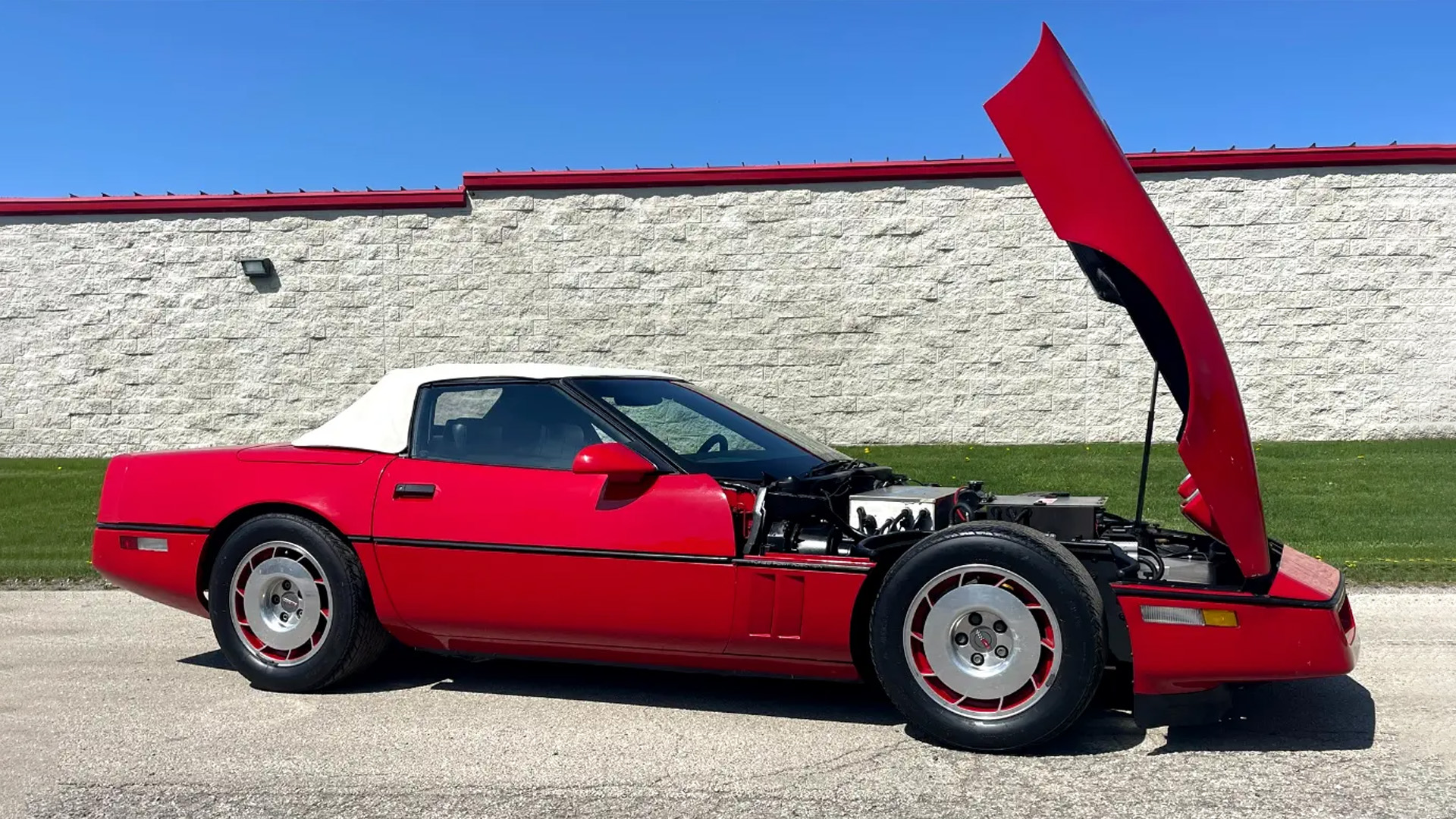

Did you know that Motorola once built an electric Chevrolet Corvette in the mid-90s? Last year, we uncovered Motorola’s long-lost efforts to make an electric Corvette a reality and brought you its many secrets via the several stories listed below. However, we’ve just become aware that the very same car is now up for sale on eBay.
Those who aren’t acclimated with this electrified Corvette, know that it’s a pet project built by a handful of Motorola engineers for a budget of $25,000 (about $52,000 in 2023 bucks). That timeline plots it alongside General Motors’ Impact concept, which was built prior to the release of the GM EV1.





The Motorola E-Vette’s electric motor made a whopping 272 peak horsepower, which was a bit more than the 250-hp factory model. But, according to a spec sheet, the car was theoretically capable of producing 428 hp with the right power supply to it—though it was limited mostly by the space where it could fit battery storage. In theory, with the right battery pack and conversion to an AC synchronous motor setup, the car could peak at a whopping 800 horsepower.
There’s a lot of history behind Motorola’s contraption, and you can read it in our previous coverage:
- We Found a Secret Chevy Corvette EV Prototype Made by Motorola in the 1990s
- The Untold Story of Motorola’s Secret 1990s Corvette EV Project: Where the Dream Began
- How a Skunkworks Crew Beat GM
- Who Killed the Electric Corvette?








At the end of the day, the downfall of Motorola’s Corvette project wasn’t the fact that it was an electric car, but that the company’s vision was restricted by battery technology. The lead-acid batteries and inefficient systems in the C4 made it impractical, with an abysmal range, an increase of 700 pounds, and long charge times.
And Motorola wasn’t alone in this problem, either. Inefficient batteries are just one of the reasons the EV1 flopped. As was the case with Henry Ford when he explored building electric vehicles in 1914 with an Edison-sourced nickel-iron battery. Heck, even today’s modern lithium-based batteries are a contention point for potential buyers despite having quadrupled the range of the Corvette. It all comes down to convenience, and gasoline is just that.






Unfortunately, the batteries in this project are kaput. Larry Brosten, the proprietor of Auto Parts City, told us that the previous owner of the car killed the batteries by leaving the car outside in the winter. So whoever decides to purchase this particular example will need to replace them if they want to get the car up and running again.
If keeping it period-correct to Motorola’s application isn’t a priority, the new owner could potentially modernize the system with newer lithium-ion batteries. But who would want to do that in something that belongs on display, anyway? Plus, it would probably be more advantageous to pick up any old C4 off the street and start the conversion from scratch on modern electronics. EV conversions have come a long way, after all.
Brosten’s auction shows a large number of Motorola’s proprietary electrical schematics for the car being included with the sale as well, meaning that any problems that might arise could be troubleshot by the new owner, or at least a mechanic capable of reading them.







If you think that this C4 would be right in your collection, Brosten has set the buy-it-now price of the E-Vette auction at $100,000. Is it worth it? Well, that’s for your to decide.
I think it’s fair to point out that this Corvette likely wouldn’t be worth its weight in lead-acid batteries if it weren’t for our reporting. After all, it was just sitting in a collector’s salvage yard for who knows how many years when he stumbled upon it. That being said, this is, undoubtedly, a museum piece. In the era of the GM EV1, it was one of the first battery-powered sports car conversions of its time made by a major company—even if that company was Motorola and not an automaker.
Got a tip or question for the author? Contact them directly: rob@thedrive.com